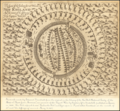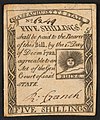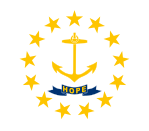Portal:New England
The New England Portal New England is a region comprising six states in the Northeastern United States: Connecticut, Maine, Massachusetts, New Hampshire, Rhode Island, and Vermont. It is bordered by the state of New York to the west and by the Canadian provinces of New Brunswick to the northeast and Quebec to the north. The Gulf of Maine and Atlantic Ocean are to the east and southeast, and Long Island Sound is to the southwest. Boston is New England's largest city and the capital of Massachusetts. Greater Boston is the largest metropolitan area, with nearly a third of New England's population; this area includes Worcester, Massachusetts, the second-largest city in New England, Manchester, New Hampshire, the largest city in New Hampshire, and Providence, Rhode Island, the capital of and largest city in Rhode Island. In 1620, the Pilgrims established Plymouth Colony, the second successful settlement in British America after the Jamestown Settlement in Virginia, founded in 1607. Ten years later, Puritans established Massachusetts Bay Colony north of Plymouth Colony. Over the next 126 years, people in the region fought in four French and Indian Wars until the English colonists and their Iroquois allies defeated the French and their Algonquian allies. (Full article...) Selected article
The 1689 Boston revolt was a popular uprising on April 18, 1689, against the rule of Sir Edmund Andros, the governor of the Dominion of New England. A well-organized "mob" of provincial militia and citizens formed in the city and arrested dominion officials. Members of the Church of England, believed by Puritans to sympathize with the administration of the dominion, were also taken into custody by the rebels. Neither faction sustained casualties during the revolt. Leaders of the former Massachusetts Bay Colony then reclaimed control of the government. In other colonies, members of governments displaced by the dominion were returned to power.
Andros, commissioned governor of New England in 1686, had earned the enmity of the local populace by enforcing the restrictive Navigation Acts, denying the validity of existing land titles, restricting town meetings, and appointing unpopular regular officers to lead colonial militia, among other actions. Furthermore, he had infuriated Puritans in Boston by promoting the Church of England, which was disliked by many Nonconformist New England colonists. (Full article...) Selected biography
Anne Hutchinson, born Anne Marbury (1591–1643), was a Puritan woman, spiritual adviser, mother of 15, and important participant in the Antinomian Controversy that shook the infant Massachusetts Bay Colony from 1636 to 1638. Her strong religious convictions were at odds with the established Puritan clergy in the Boston area, and her popularity and charisma helped create a theological schism that threatened to destroy the Puritans' religious experiment in New England. She was eventually tried and convicted, then banished from the colony with many of her supporters. With encouragement from Providence founder, Roger Williams, Hutchinson and many of her supporters established the settlement of Portsmouth in what became the Colony of Rhode Island and Providence Plantations. After her husband's death she moved to New Netherland near an ancient landmark called Split Rock in what later became The Bronx in New York City. Here all but one of the 16 members of her household were massacred during an attack, the only survivor being her nine-year old daughter, Susanna, who was taken captive. Her well-publicised trials and the accusations against her make Hutchinson the most famous, or infamous, English woman in colonial American history. (Full article...)
Selected picture Credit: Arthur J. Stansbury (1848) Sketch of Massachusetts native and former President John Quincy Adams after the stroke that would claim his life
General images -The following are images from various New England-related articles on Wikipedia.
Did you know (auto-generated)
Related portalsMore did you know...
Selected State
Rhode Island
Incorporated 1776 Co-ordinates 41.7°N 71.5°W Rhode Island, officially the State of Rhode Island and Providence Plantations, is the smallest in area, the 8th least populous, but the 2nd most densely populated of the 50 U.S. states. Rhode Island was the first of the original Thirteen Colonies to declare independence from British rule, declaring itself independent on May 4, 1776, two months before any other colony. The State was also the last of the thirteen original colonies to ratify the United States Constitution. Rhode Island's official nickname is "The Ocean State," a reference to the State's geography, since Rhode Island has several large bays and inlets that amount to about fourteen (14) percent of its total area. Its land area is 1,045 square miles (2706 km2), but its total area is significantly larger. (Full article...) WikiProjectsAssociated WikimediaThe following Wikimedia Foundation sister projects provide more on this subject:
Discover Wikipedia using portals |
















































































